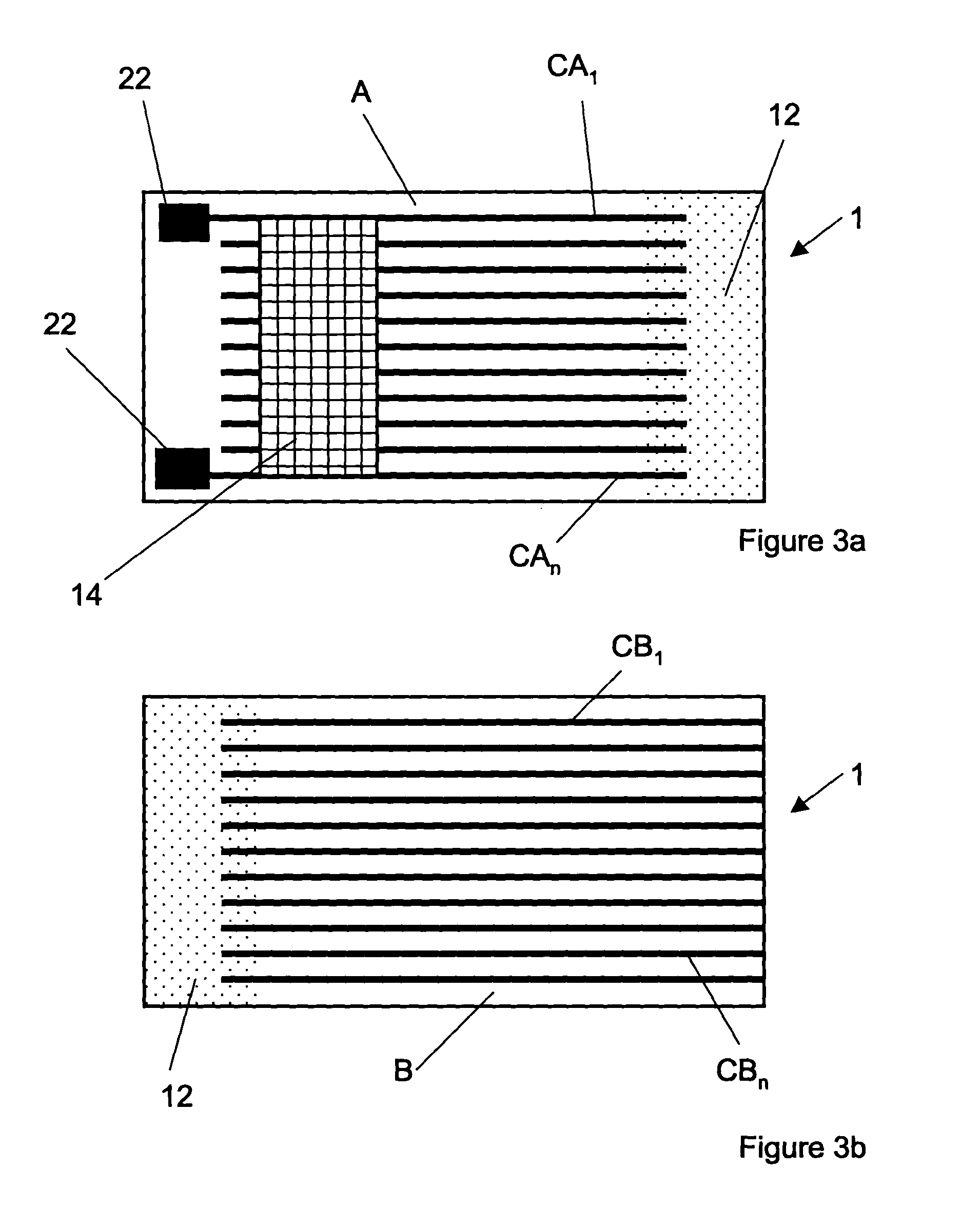Method for producing a tube
a tube and substrate technology, applied in the direction of resistive material coating, separation process, instruments, etc., can solve the problems of complex assembly process, troublesome outgassing of systems constructed of such organic materials, and complex assembly process
- Summary
- Abstract
- Description
- Claims
- Application Information
AI Technical Summary
Benefits of technology
Problems solved by technology
Method used
Image
Examples
Embodiment Construction
[0043]In accordance with a first embodiment of this invention, FIG. 1 shows a flexible substrate (1) having opposed surfaces (A) and (B) and opposed ends (i) and (e). As discussed hereinafter, flexible substrate (1) may have conductors (CA) and (CB) on the opposing surfaces. Although shown as one layer, flexible substrate (1) may be formed of multiple layers each of which may contain one of the electrodes (CA) and (CB). As shown in FIG. 2a, substrate (1) is intended to be formed into a tube (7) having an axis (5) which may be perpendicular to a line (not shown) extending between ends (i) and (e). As is well known in the art, tube (7) may be formed by coiling or rolling surface (B) and end (i) of substrate (1) around a mandrel (9) that may be subsequently removed. For simplicity, FIG. 2a shows tube (7) to be formed from about one and one sixth revolutions of substrate (1) around mandrel (9). The invention contemplates tube (7) being formed from multiple revolutions of substrate (1). ...
PUM
| Property | Measurement | Unit |
|---|---|---|
| temperatures | aaaaa | aaaaa |
| included angle | aaaaa | aaaaa |
| temperature | aaaaa | aaaaa |
Abstract
Description
Claims
Application Information
 Login to View More
Login to View More - R&D
- Intellectual Property
- Life Sciences
- Materials
- Tech Scout
- Unparalleled Data Quality
- Higher Quality Content
- 60% Fewer Hallucinations
Browse by: Latest US Patents, China's latest patents, Technical Efficacy Thesaurus, Application Domain, Technology Topic, Popular Technical Reports.
© 2025 PatSnap. All rights reserved.Legal|Privacy policy|Modern Slavery Act Transparency Statement|Sitemap|About US| Contact US: help@patsnap.com



